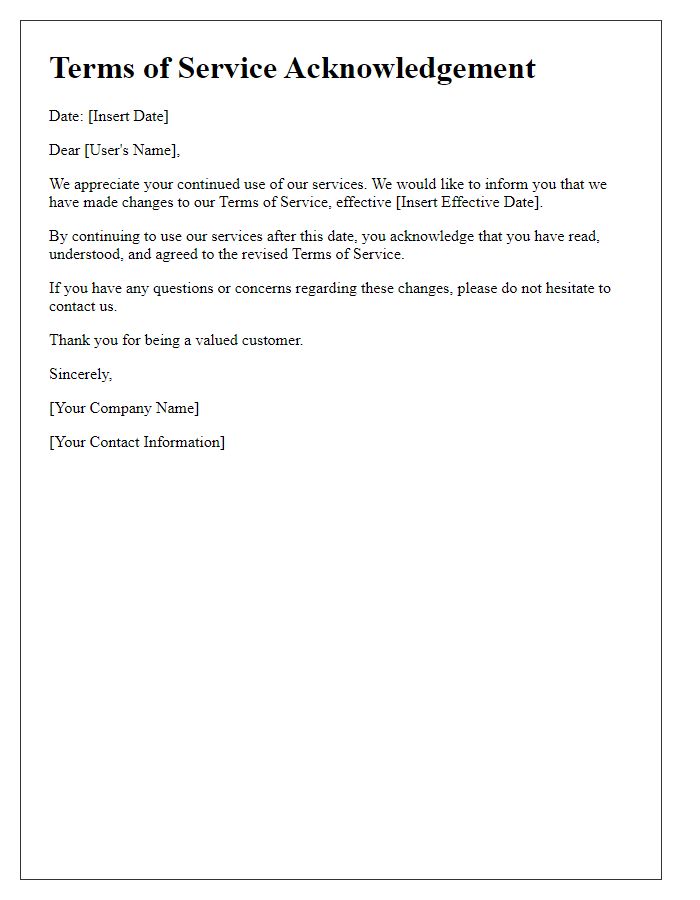Are you gearing up to draft a terms of service agreement and feeling a bit overwhelmed? You're not alone! Many businesses find it challenging to balance legal language with user-friendly communication. In this article, we'll share a step-by-step guide to creating clear and effective terms of service that protect your interests while ensuring transparency for your users, so be sure to keep reading!

Clarity and Precision
A thorough review of terms of service agreements is crucial for ensuring clarity and precision in user interactions. The document outlines the rules and responsibilities for both parties, often detailing specific clauses such as user rights, cancellation procedures, and privacy practices. Ambiguities can lead to misunderstandings, potentially resulting in legal disputes between users and service providers. Organizations should consider utilizing legal professionals specializing in contract law to analyze the wording of agreements, ensuring compliance with regulations such as the General Data Protection Regulation (GDPR) and the California Consumer Privacy Act (CCPA). Clear definitions of key terms like "user data" and "service limitations" enhance comprehension and foster trust, ultimately elevating the user experience significantly.
Legal Compliance
Legal compliance for terms of service agreements is critical for businesses operating online, especially in jurisdictions like the European Union with the General Data Protection Regulation (GDPR). These agreements must clearly outline user responsibilities, including data protection practices for personal information, which affects user trust and company liability. Regular reviews should ensure alignment with evolving laws such as the California Consumer Privacy Act (CCPA) or the Telecommunications Act in the United States. Notable cases like the 2021 Facebook data breach highlight the importance of stringent terms to protect against legal repercussions, ensuring businesses protect user data effectively and maintain compliance.
User Understanding
A clear terms of service (ToS) agreement enhances user understanding of rights and responsibilities in digital platforms. Significant sections often include definitions of key terms such as "user," "service," and "content" alongside legal obligations. Privacy policies explain data collection practices while dispute resolution clauses outline methods for resolving conflicts, commonly through arbitration (a process where a neutral third party makes a binding decision). The agreement should detail user conduct, addressing issues such as harassment and intellectual property rights, particularly under copyright laws. Compliance with regulations like the General Data Protection Regulation (GDPR) should be emphasized, ensuring users know their rights regarding personal data access and deletion. Lastly, modification clauses indicate how and when the terms may be updated, fostering transparency and keeping users informed of changes to their rights.
Clear Definitions
Clear definitions of terms within a service agreement are crucial for ensuring mutual understanding between parties. Each term, such as "Service Provider," "User," and "Confidential Information," should be explicitly defined to avoid ambiguity. For instance, "Service Provider" can denote any entity or individual who offers services, while "User" may refer to the individual or organization accessing those services. Additionally, "Confidential Information" refers to any sensitive data shared during the course of the agreement, often including trade secrets, financial data, or proprietary technology. Accurate definitions not only clarify responsibilities and expectations but also protect legal rights in case of disputes, fostering a transparent relationship between participants.
Dispute Resolution Mechanism
The Dispute Resolution Mechanism outlines procedures for addressing conflicts arising from the terms of service agreement between parties. This mechanism encourages resolution through negotiation and mediation before escalating to arbitration or litigation. For example, parties must submit a written notice detailing the nature of the dispute within 30 days of discovery. Mediation must occur within a specified timeframe, typically 60 days, conducted by a neutral third-party mediator selected from a roster established by a recognized organization such as the American Arbitration Association. If unresolved, arbitration proceedings may commence, governed by the rules of the chosen arbitration institution, emphasizing a streamlined process with limited discovery. This approach aims to foster collaborative resolution while minimizing costs and prolongation of disputes.













Comments